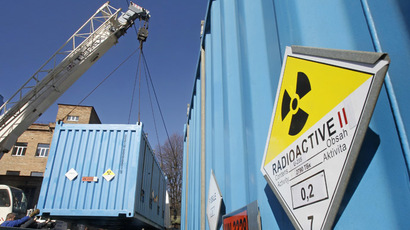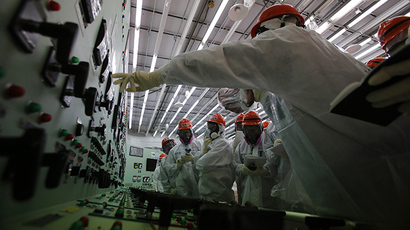Japan lifts evacuation order near Fukushima for first time since nuclear disaster
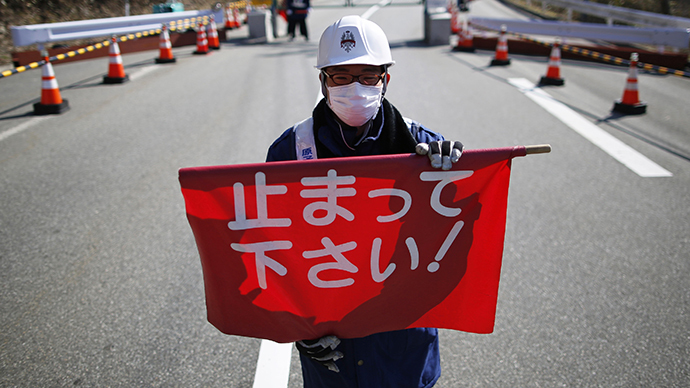
Japan has lifted the evacuation order on part of the no-entry zone around the crippled Fukushima plant for the first time since the nuclear disaster struck three years ago. But many evacuees say they won't return, citing fears over radioactive fallouts.
The order, which is the first to be lifted for part of Miyakoji
district in Tamura City, Fukushima Prefecture in eastern Japan,
allows residents to return to their homes. Decontamination work
was completed there last June, according to officials. The order
affects 355 people in 116 households, according to late-March
figures, NHK reported.
However, concerns remain about background radiation levels in the
area of Miyakoji. Residents were told at a community meeting last
month that radiation contamination levels had lowered
sufficiently, enabling their return to the area. Radiation levels
in Miyakoji ranged from 0.11 microsieverts to 0.48 microsieverts
per hour, according to February readings. This is higher than the
average 0.034 microsieverts per hour measured in central Tokyo on
Monday.
都路町の幼稚園も以前より http://t.co/xP0IoA4Hq1 線量が約半分に下がっています。小学校には新しい設備なども運び込まれ準備が進められていました。 pic.twitter.com/GKWU2k3j4h
— N崎 (@Nzaki0716_sub) March 23, 2014
Local broadcaster NHK said that more than half of the households
do not plan to return.
Thirty-six-year-old evacuee Hideyuki Tsuboi said that he and his
wife plan to remain in temporary housing in the city with their
three young daughters, and move to Fukushima City next year. He
added that from a parental perspective, he cannot choose to
return unless living conditions in the district improve
sufficiently.
"Many of our friends and neighbors won't come back,"
said Kimiko Koyama, 69, speaking on her return to the large
farmhouse she had occupied for 50 years, Reuters reported.
"There are no jobs. It's inconvenient and young people are
scared of radiation," she said. "My daughter won't bring
our grandsons here because of the radiation."
For some, the homecoming is more difficult than for others. Many
residents worked at the Fukushima plant before the disaster.
"It was the
only job out there and we were grateful," said
Koyama. "We worked hard to feed our three daughters. We
worked and we built our life here."
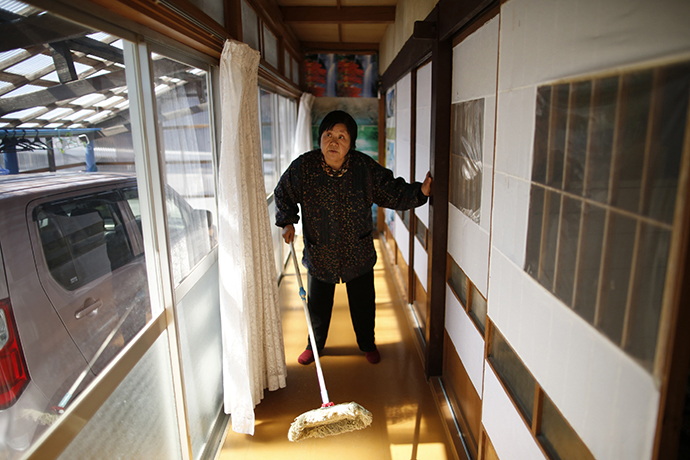
Despite many residents' hesitance, others are eager to return to their houses.
Mitsuru Tsuboi told NHK that he was relieved to be able to return home. However, he is still concerned about effects from radiation. Tsuboi and his wife Mitsu, both 79, plan to live in their home in Miyakoji after repair work is completed in April.
The Miyakoji district lies 20 kilometers west of where the nuclear catastrophe occurred and is on the edge of the initial exclusion zone.
On March 11, 2011 an earthquake and tsunami hit the Fukushima Daiichi plant, which is situated just 220 kilometers away from the Japanese capital of Tokyo. Three reactors at the facility went into meltdown, causing the world’s worst nuclear disaster since Chernobyl in 1986.
The resulting radioactive fallout forced nearly 160,000 people to leave their homes. In April 2011, the government imposed a 20-kilometer no-entry zone around the crippled nuclear power plant in the interest of public health. Around 80,000 Fukushima residents remain in temporary accommodation, local Asahi newspaper reported on Tuesday. The cities, towns, and villages in the vicinity have been reduced to ghost towns.
Decontamination works have been ongoing in 11 municipalities near the plant since the catastrophe occurred.
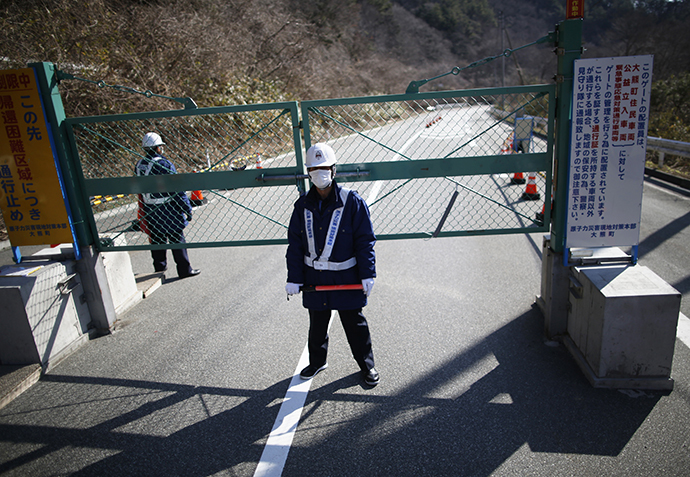
The government, working under a deadline, has completed decontamination work in the towns of Okuma and Naraha and the village of Kawauchi, Environment Minister Nobuteru Ishihara told reporters on Tuesday.
Authorities hope to lift the evacuation order for a portion of the village of Kawauchi, home to 276 people, in late July, Asahi reported. It is also considering lifting evacuation orders in the municipalities of Katsurao, Nahara, Iitate, Minami-Soma, and Kawamata.
The deadline for decontaminating areas in the seven remaining municipalities has been postponed to three years from now at the latest – except for Futaba Town, which is situated very close to Fukushima Daiichi, with high radiation levels.
The safe level of radiation has been declared by the Japanese government at a maximum of 20 millisieverts of radiation per year. Officials have said they would like to get radiation exposure down to one millisievert a year.
Though Japan has invested around US$30 billion in the cleanup process, it is behind schedule. Ishihara said the government will continue monitoring whether the results of decontamination are maintained, adding that the government will also accelerate efforts to decontaminate remaining areas.













